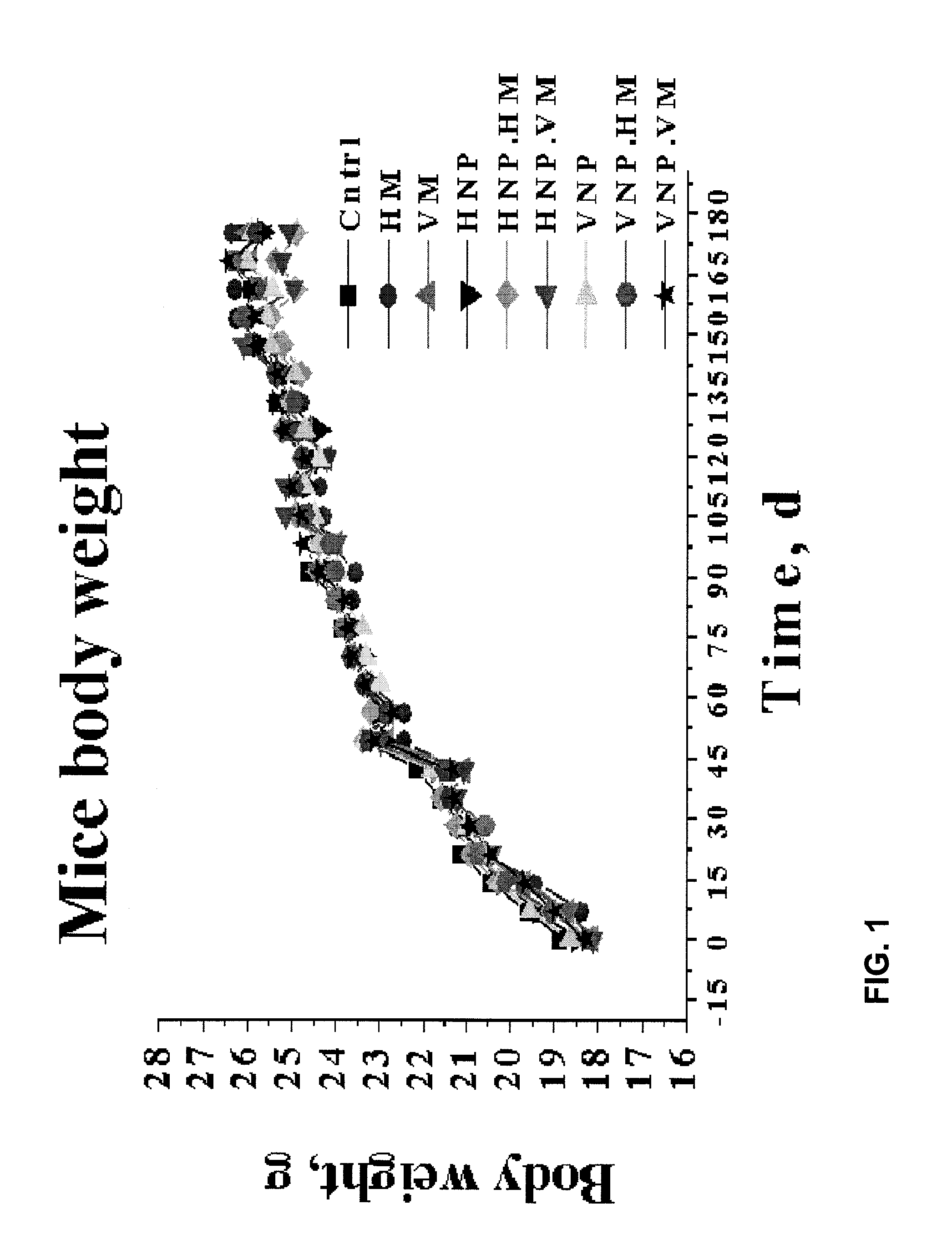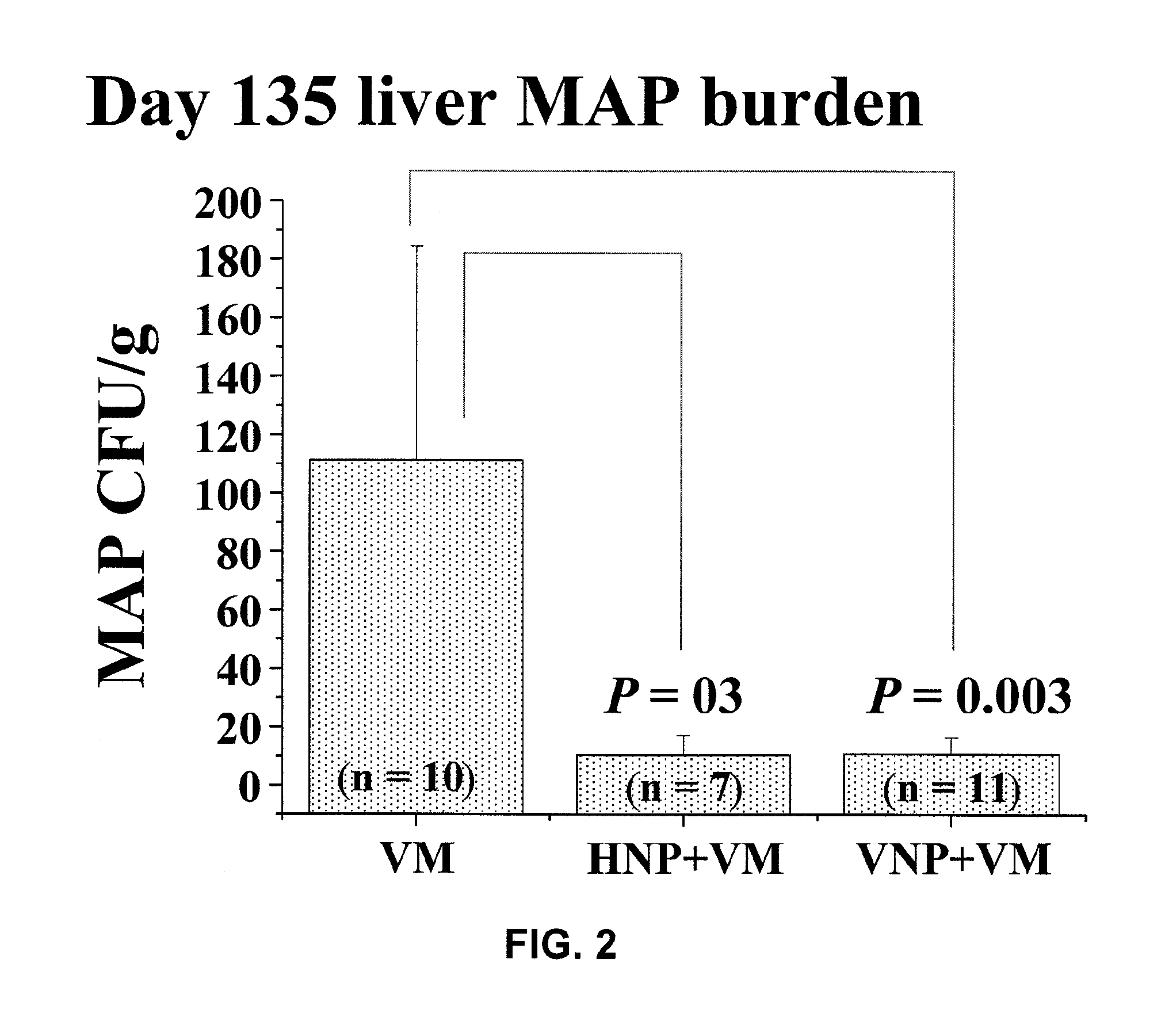Prevention And Treatment Of Gastrointestinal Infection In Mammals
a technology for gastrointestinal infections and mammals, applied in the field of gi infection inhibition, can solve the problems of ineffective treatment of jd and cd, inconvenient treatment of gastrointestinal infections, so as to enhance the food safety of meat or milk, and reduce the number of pathogens
- Summary
- Abstract
- Description
- Claims
- Application Information
AI Technical Summary
Benefits of technology
Problems solved by technology
Method used
Image
Examples
example 1
[0046]Prevention of Mycobacterium avium subsp. paratuberculosis (MAP) infection in mice by oral administration of a Lactobacillus acidophilus NP51
[0047]Three hundred and seventy (370) Balb / c mice, 185 males and 185 females, were kept in a pathogen-free environment in standard mouse cages with raised-wire floor. Starting at the age of 6 weeks old, these mice were fed 3-5 grams per day of sterile chow meal containing different forms of the probiotics NP51 at a dosage of about 1×106 CFU per mouse per day until the end of the study. The NP51 strain was provided by Nutrition Physiology Company, LLC.
[0048]The mice were placed on a diet containing the NP51 probiotics for 45 days (Day 1 to Day 45). On Day 45, the mice were challenged with 1×108 CFU of heat-killed or viable MAP through intraperitoneal injection. The mice were randomly assigned to ten treatment groups in a factorial design which include, for example, mice fed with either heat-killed or viable NP51 and mice challenged with eit...
example 2
[0055]NP51 Dosage Study in Balb / c Mice
[0056]In order to evaluate the health effects of long term supplementation of probiotics to animals, variable concentrations of a probiotic were fed to six-week old BALB / c mice over forty-five days. The influence of the probiotics on the microbial population of the gut and the histopathology of the GI tissue were compared to negative controls (no probiotics fed). The health of these mice were evaluated through histopathology analysis, which include the following tissues: gastrointestinal tissues (esophagus, small and large intestine, and stomach), liver, and spleen. Bacterial floral concentrations in fecal pellets, and gut tissues were also analyzed for the effects on microbial population diversity.
[0057]Over the course of forty-five days, 80 mice (10 mice per treatment group) were fed fresh sterilized mouse chow with either no probiotics, an inert filler maldextrin, a live probiotic (NP51) at concentrations of 1×104, 105, or 106 CFU / g chow, or ...
PUM
 Login to View More
Login to View More Abstract
Description
Claims
Application Information
 Login to View More
Login to View More - R&D
- Intellectual Property
- Life Sciences
- Materials
- Tech Scout
- Unparalleled Data Quality
- Higher Quality Content
- 60% Fewer Hallucinations
Browse by: Latest US Patents, China's latest patents, Technical Efficacy Thesaurus, Application Domain, Technology Topic, Popular Technical Reports.
© 2025 PatSnap. All rights reserved.Legal|Privacy policy|Modern Slavery Act Transparency Statement|Sitemap|About US| Contact US: help@patsnap.com



